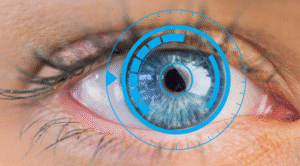The invention of biofeedback came as a welcome relief for people grappling with chronic medical issues. Using special sensors, you can monitor your physiological reactions to certain conditions and use the data to train your body accordingly.
Biofeedback can help anticipate and lessen the severity of various undesirable symptoms. The technique is notably effective in managing anxiety disorders, chronic pain, and even substance cravings.
However, biofeedback’s ability to help control physiological functions makes it a subject of immense interest within the polygraph community. Some pundits claim the technique might impact the accuracy of lie detector tests, casting aspersions on the polygraph’s credibility.
But how factual are these assertions?
Introducing Biofeedback
Biofeedback is a technique that utilizes special sensors to monitor certain bodily functions, providing actionable feedback that can help you control your physiological responses. The therapy is fundamentally similar to lie detector tests in terms of what they measure.
Like biofeedback, a polygraph test monitors changes in certain physiological functions consistent with lying. The technique mostly tracks spikes in heart rate, blood pressure, breathing, and skin conductivity.
Mounting evidence indicates that lying elevates the autonomic nervous system (ANS), a division of the peripheral nervous system (PNS) that controls several involuntary functions.
Another core similarity between biofeedback and polygraph tests is that they both decode bodily signals in real-time. Besides, both techniques utilize unique physiological sensors.
As biofeedback’s principal aim is to help manipulate bodily functions, many wonder if the technique can impact the reliability of polygraph tests.
But can it?
How Does Biofeedback Work?
To conduct biofeedback, a therapist attaches special sensors to your body. The sensors may go on your scalp, chest, fingers, or wrists, depending on the physiological data targeted.
Each dataset appears on a computer screen, usually in real-time.
Most biofeedback equipment displays data in visual and auditory formats. However, some advanced machines also utilize haptic (vibration) cues.
The information collected during biofeedback therapy enables you to become more conscious of your body’s natural responses. With your therapist’s intervention, you can leverage the data to manipulate your mental and physiological states.

Common Applications of Biofeedback Therapy
By harnessing the physiological insights from biofeedback therapy, you can control sensitivity to various conditions. Examples include;
- Stress and anxiety disorders
- Depression and mood disorders
- Chronic pain due to migraines, osteoarthritis, and endometriosis
- Cardiovascular anomalies, such as elevated heart rate and high blood pressure
- Urinary and fecal incontinence
- Muscle control issues, such as tenderness and spasticity
- Irritable bowel syndrome (IBS)
Is Biofeedback Premised on Science?
Despite widespread criticism, mounting evidence suggests that biofeedback works.
A previous study found that using audio feedback might improve the efficiency of detecting respiration deficiency during lie detector tests.
Not only does this finding underscore biofeedback’s efficiency. It also points to a close nexus between the technique and polygraph testing.
Polygraph Countermeasures and the Role of Biofeedback
In polygraph testing, countermeasures denote underhanded tactics deployed by some examinees in an attempt to beat the exam.
Countermeasures may be physical, mental, or pharmacological.
Now, biofeedback is inherently designed to help a subject manipulate their bodily functions. That makes it a potential countermeasure.

How Effective Is Biofeedback At Manipulating Polygraph Tests?
Controlling psychophysical responses using biofeedback presents inherent challenges.
For starters, biofeedback is not 100% effective. The technique’s efficacy remains a subject of ongoing research and debate.
More importantly, there’s no valid evidence that polygraph countermeasures work. Using these underhand tactics may, in fact, prove detrimental.
Part of polygraph training entails equipping examiners with ways to detect countermeasures.
Here are two principal ways a polygrapher may establish the use of countermeasures;
a) Collecting Physiological Baselines
The polygraph process falls into three phases, namely the pre-test, in-test, and post-test phases, which all happen in the same session.
One of the critical processes during the pre-test phase is collecting an examinee’s baseline data.
In polygraphs, baseline data constitute an individual’s normal physiological reactions. Examiners compare the magnitude of response to the in-test questions with the baselines to accurately infer deception.
Let’s say that an examinee attempts to control their breathing during in-test questioning.
In that case, the polygraph’s pneumographs will record data inconsistent with the subject’s physiological baselines. Examiners can quickly pick out these anomalies and determine that the examinee is using countermeasures.
b) Questioning an Examinee About Countermeasures
Many examiners will also question examinees directly about using countermeasures.
During in-test questioning, an examiner may ask, “Did you use any countermeasures to pass this polygraph test?” They may also be more blunt, such as “Did you attempt to control your breathing while responding to the question about murdering Mr. Tom?”
Note that countermeasure questions are typically unexpected. Therefore, they’re sure to catch any dishonest examinee off guard.
If an examinee confirms they tried to manipulate the polygraph test, an examiner may judge the test inconclusive or give an outright deceptive verdict.

The Bottom Line
Biofeedback shares one key similarity with polygraph tests – both rely on physiological data. However, the motives are fundamentally different.
The information collected during biofeedback sessions enables an individual to manipulate their bodily functions with a view to mitigating the impact of certain illnesses. But if used during a polygraph test, biofeedback may constitute a countermeasure and lead to devastating consequences.
There’s much to benefit from integrating biofeedback into your wellness routine. Just do not attempt to deploy the techniques learned to beat a lie detector test.
In fact, doing so would be counterproductive. Polygraph examiners are professionally trained to sniff out countermeasures and will readily confront you if they think you’re deploying these underhanded tactics.






